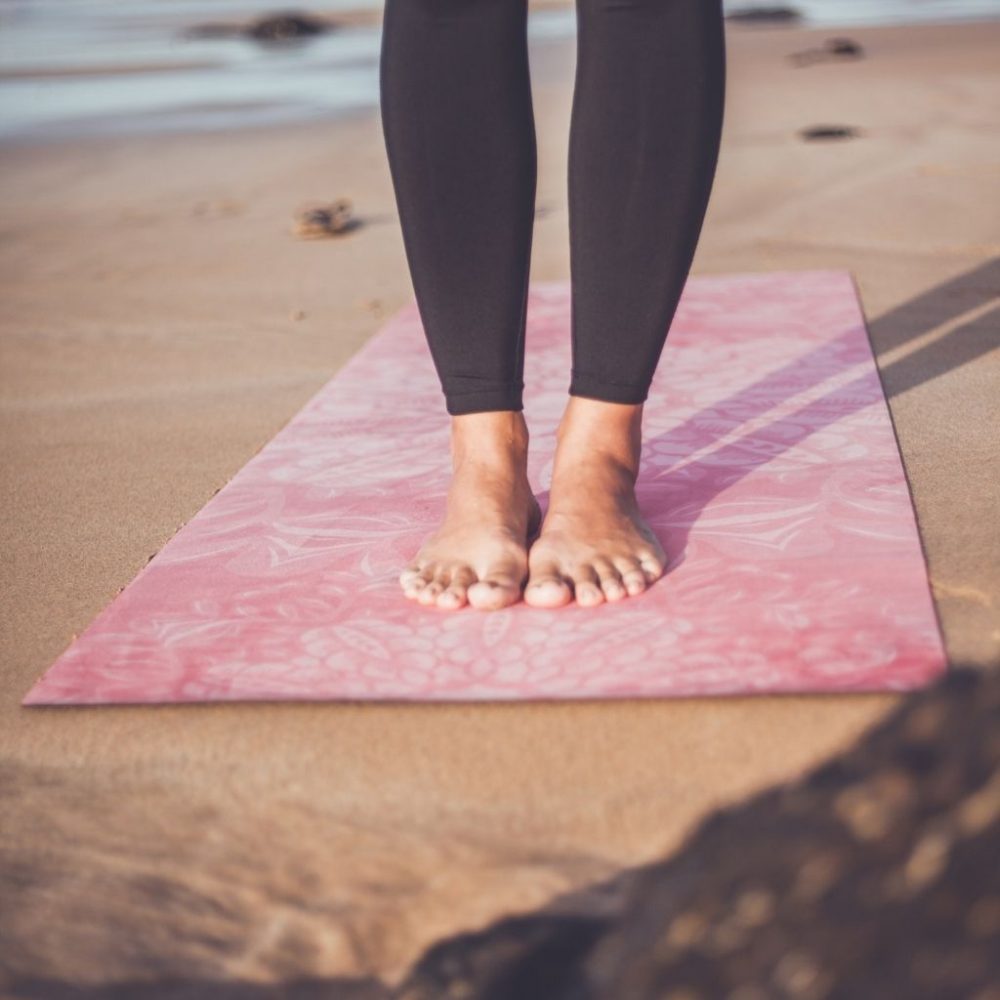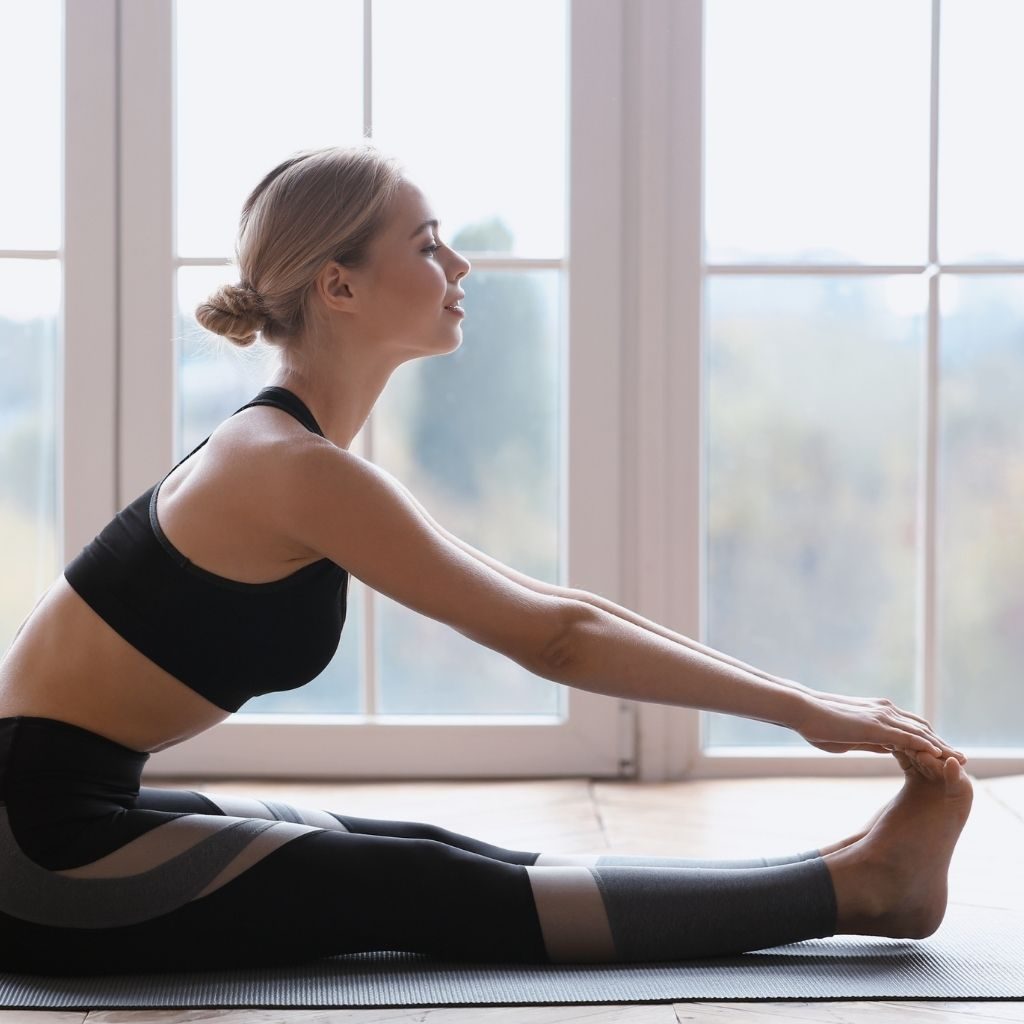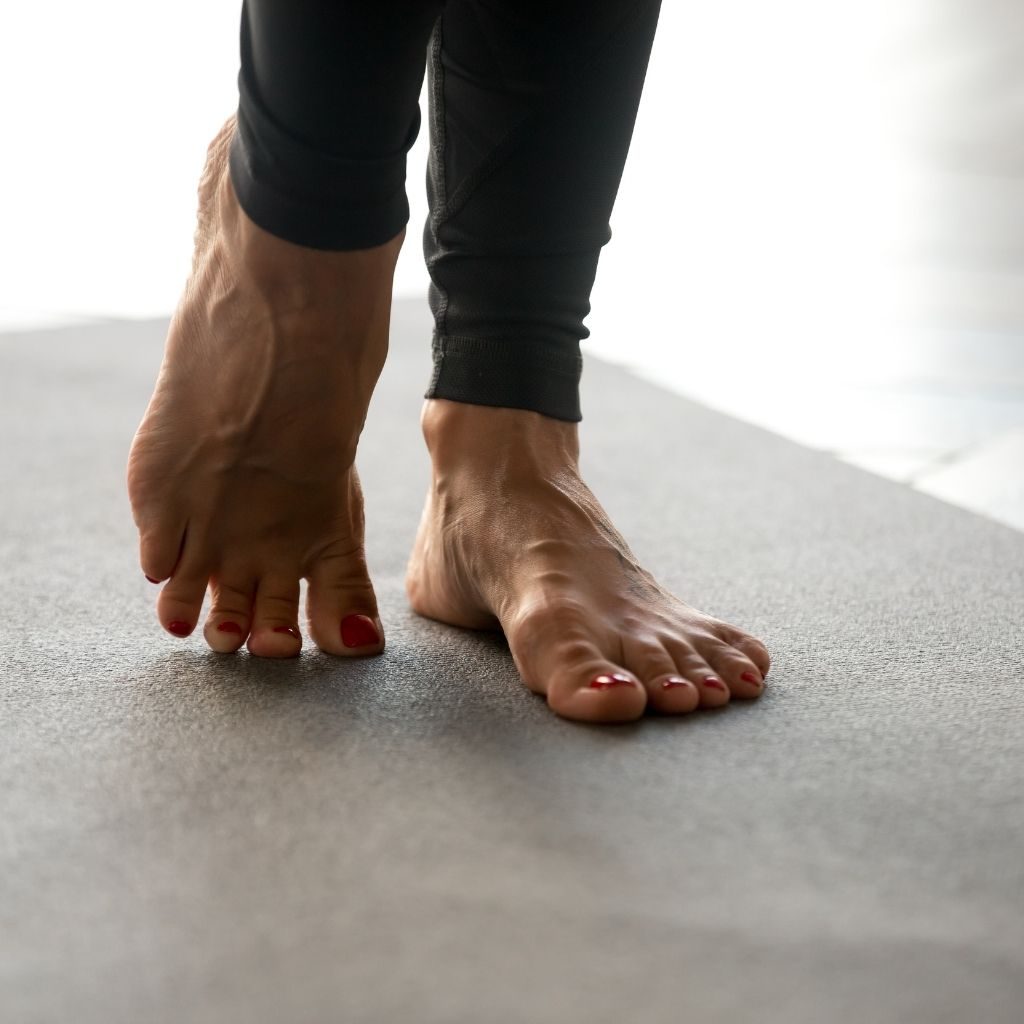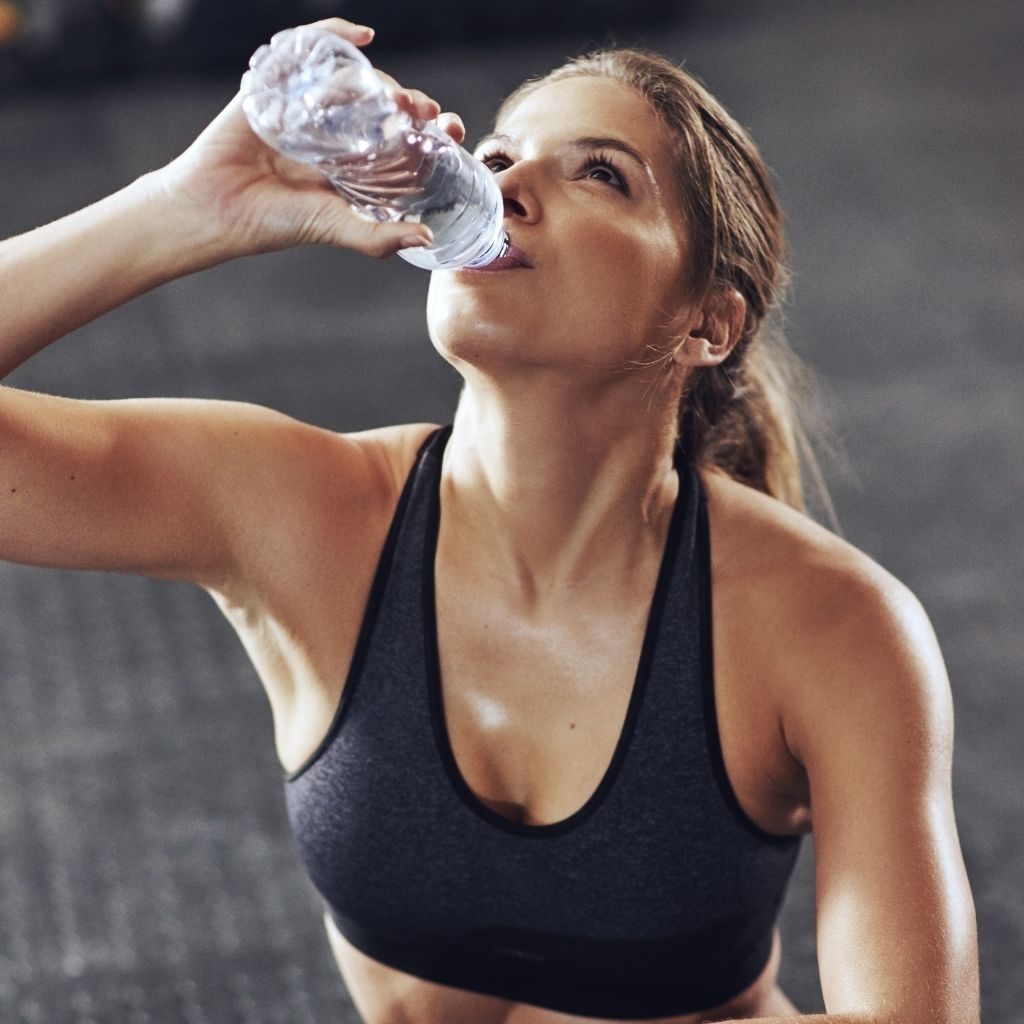Why Does Yoga Hurt My Feet? (Answered!)
It is not very uncommon to come to your mat and notice some soreness or discomfort in your feet.
Sometime in the middle of your practice, this discomfort turns into a sharp, intense pain, and you begin to wonder if yoga is hurting your feet.

Yoga can hurt your feet if, during asanas, there is repeated strain on the plantar fascia, the thick, web-like tissue that connects the heel to the front of the foot. It can also happen as a result of excessive load on the feet, particularly in balancing poses. If you are a beginner, you might not be used to specific movements of the feet in yoga, and stretching those parts can cause discomfort and pain.
In this article, we talk about everything feet – why yoga can cause foot pain, the reasons for pain on the top of your feet, causes of foot cramps, how to deal with foot cramps while doing yoga, and how to prevent foot cramps.
Let us start with the reasons why yoga can cause foot pain.

Reasons for yoga causing foot pain
Yoga can cause foot pain if you have tight calves, if your core and hip muscles are not sharing the load, or if your feet or your knees are not aligned. Though yoga per se does not cause foot pain, it can lead to it if done incorrectly.
Here are some reasons why and when it can happen:
You have tight calves
If your calf muscles are tight, there is an increased pull on the heel bone to make up for the lack of flexibility in that area.
This can happen in asanas where the calf and ankle muscles need to work, like a downward-facing dog and standing forward bends.
These short calf muscles compensate by stretching the plantar fascia, which remains lengthened, thereby increasing the chances of inflammation or micro-injury.
Your core and hip muscles are not sharing the load
Particularly in balancing poses, if your core is not supporting you, you may feel that all the weight is coming onto the foot.
This is also true for the hip muscles and glutes, when, if they are not doing their job well, you will notice that your calf muscles are overcompensating and your foot is bearing all the weight.
In poses like warrior, the feet can be digging into the mat to stay in the posture.
This excessive load on the foot can cause stress, leading to pain.
Your feet or knees are not aligned
In all the standing poses in yoga, attention is drawn to the feet.
The feet are supposed to be parallel, with the weight equally distributed throughout the feet.
However, we tend to roll the inner edges of the feet inward or put more weight on the outer edges of the feet.
Over time, this misalignment can cause the foot to change from its neutral position, leading to pain.
Plantar fascia causes pain in the heels of the feet.
Let us now look at the reasons for the pain on the top of your feet.
Reasons for pain on the top of your feet
Pain on the top of the feet can result from overuse of that area, especially in activities like running, jumping, or yoga. This can lead to injury, micro tears, or inflammation and cause pain. Another reason for pain on the top of the feet is if the ligaments and supporting muscles of the foot have become weak.
Pain on the top of your feet can make normal daily activities feel uncomfortable.
Here are the main reasons why it could be happening:
Overuse of the top of your foot
Often, activities like running, jumping, or even yoga put a lot of strain on the top of the foot.
In yoga, for instance, when doing multiple rounds of sun salutations, there is frequent stepping back, jumping, and landing on the toe pads.
This can lead to injury, micro tears, inflammation, or swelling on the top of the foot and can cause pain.
Weakening of the ligaments and supporting muscles of the foot
The arches and the top of the foot are supported by ligaments that hold the foot together.
With age, the ligaments that used to be tight can become loose.
When this happens, there is additional strain on the muscles of the foot, resulting in pain in the foot.
The way to overcome this is to strengthen the supporting muscles so they can compensate for the loosening of the ligaments.

Leading causes for foot cramps
Various reasons can cause foot cramps, the leading ones being dehydration, excessive strain on the foot because of over-exercising or over-exertion, narrowing of the arteries, wearing shoes that are too tight, and low levels of minerals in the body.
Foot cramps are those painful and highly uncomfortable spasms of the muscles in the feet.
Here are the main reasons why they happen:
Dehydration
If you do not have enough water, the organs and tissues of your feet are unable to function correctly.
When you are doing a more aerobic style of yoga or become fatigued and are low on water, the chances are that you can experience foot cramps.
It can also happen if you are doing hot yoga or yoga in warm weather.
Over-exercising
If there is excessive strain on the feet due to overuse or overexertion, it can cause the muscles to cramp.
Another reason for cramps while exercising is the narrowing of the arteries.
When that happens, blood flow to the feet is reduced, resulting in cramp-like pain.
Shoes that are too tight
If shoes are too tight for the feet, they can restrict blood flow and cut off circulation.
When there is no space for the toes to wiggle, movement of the feet is curtailed, and the feet can even fall asleep.
This can cause the muscles of the feet to cramp.
Low levels of minerals
A deficiency of potassium in the blood can cause muscle cramping in the feet.
Potassium helps control the functioning of the nerves, and when its levels fall, it can lead to fatigue and weakness of the muscles.
At times, low levels of calcium and magnesium can also cause the muscles of the feet to cramp.
How to deal with foot cramps during yoga
If you experience foot cramps while doing yoga, the first thing to do is to come out of the pose. Reverse the stretch you were doing when you got the cramp by gently taking the foot in the other direction. Drink some water and massage the area for some time until you find relief.
When you are in the middle of a pose, and a foot cramp hits you, the experience can be debilitating.
Here are some ways to deal with foot cramps during yoga:
Come out of the pose
This is the first and most important thing to do.
If you get a foot cramp, it is ok to let go off wherever you are in your pose and sit.
The cramped muscle needs to relax, so it is never a good idea to keep the stretch.
Reverse the stretch
Doing this helps in easing out the muscles of the foot that were cramping.
So, for instance, if your toes were pointed when they got a cramp, place them flat on the floor and lift the heels.
If your toes were tucked under and the top of your feet are flat on the mat, say in a kneeling pose, sit, hold your toes and flex the foot towards you.
Massage the area
For immediate relief from cramps, you can hold the foot in your hand, squeeze the top and bottom, and gently compress it.
Massaging the area will help the cramp go away.
You may also like 👉 Why does yoga hurt my hands?

Preventing foot cramps
To prevent foot cramps, before you go to yoga class, make sure you are hydrated and have had a light snack like a fruit. Do some light foot stretches before you start your practice, and make sure you do not overexert the foot. Also, walking barefoot in nature helps strengthen the foot muscles, thereby preventing cramps.
While you can do things for immediate relief from foot cramps, frequent cramps need a more long-term solution.
These measures can help you prevent foot cramps:
Hydrate and get electrolytes
It is a good practice to drink enough water an hour or so before a yoga class.
It is also good to trust your body’s cues and sip on water if you feel thirsty during class.
Eating something light and rich in potassium, a banana, or an avocado, for instance, will keep you energized.
This will provide enough fuel to the muscles of the feet to prevent them from cramping.
Do some light foot stretches
Whether going out for a run or joining your yoga class, rather than directly demanding the feet to get into action, do some light stretching before.
Warming up the feet will ensure that they are more prepared for what is to come.
Be gentle in your practice
One way to prevent foot cramps is to be mindful of how far to go in poses.
In yoga poses where the top of the feet are on the floor, you can support the feet by inserting props like cushions or rolled blankets under the ankles.
Also, make sure you are not doing too much too hard or too fast.
Walk barefoot
Taking some time out to walk barefoot in nature is an excellent way to strengthen the muscles of the feet.
The varied surfaces allow for different foot parts to be used, which helps strengthen the muscles.
However, if you are new to barefoot walking, keep it short in the beginning and increase the distance you walk gradually.
Closing thoughts
If anything, yoga can help with pain in the feet.
Continuing slowly with your yoga practice, making modifications to a posture where necessary, and taking help from a teacher where you need to can gradually strengthen the foot muscles and prevent pain.
Here is a great video to watch if you want to dive deeper into the foot’s anatomy and discover how yoga can hurt the feet.

